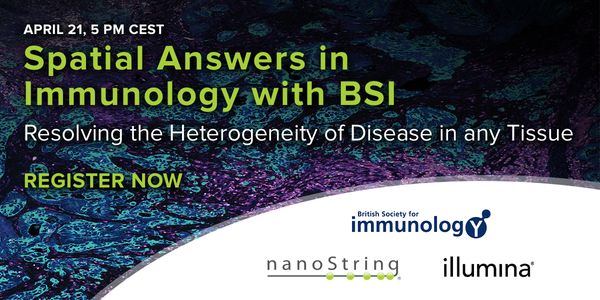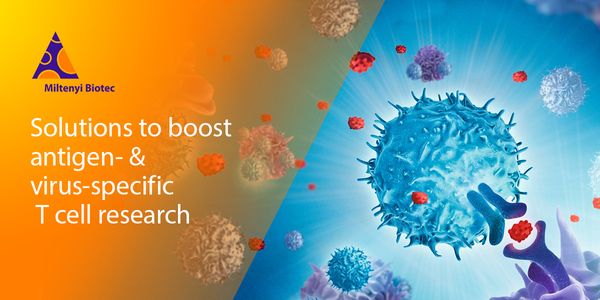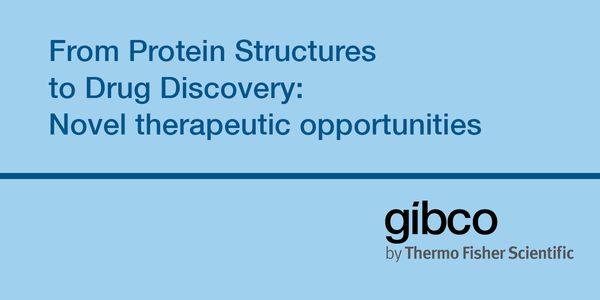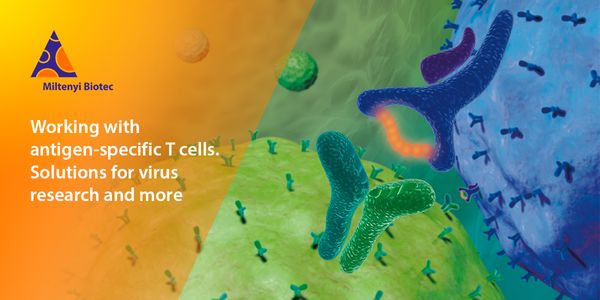Rare Disease
A rare disease is any disease that affects a small percentage of the population. In some parts of the world, an orphan disease is a rare disease whose rarity means there is a lack of a market large enough to gain support and resources for discovering treatments for it, except by the government granting economically advantageous conditions to creating and selling such treatments. Orphan drugs are ones so created or sold.
-
APR 21, 2021 | 5:00 PMDate: April 21, 2021 Time: 8:00am (PDT), 11:00am (EDT), 5:00pm (CEST) Spatial Answers Trilogy - Spatial Answers in Immunology Immunology Researchers share their Spatial Discoveries in SARS-C...Speaker: Doug Brown, PhD , Susanne Krasemann, MD, PhD , Michelle Naughton, PhDSponsored By: NanoString Technologies, IlluminaWhen SARS-CoV-2 reached the United States in late January 2020, Labcorp immediately began development of an RT-PCR test to aid in detection and diagnosis of COVID-19 in infected patients. As...
APR 07, 2021 | 7:00 AM
DATE: April 7, 2021 TIME: 7:00am PDT Abstract: Learning objectives: Webinars will be available for unlimited on-demand viewing after live event. LabRoots is approved as a provider of continu...
MAR 16, 2021 | 8:00 AM
DATE: March 09, 2021 TIME: 08:00am PST The COVID-19 pandemic has placed urgency on precise analysis of rare antigen- and virus-specific T cells. At Miltenyi Biotec, we offer a complete workf...
FEB 09, 2021 | 8:00 AM
DATE: February 09, 2021 TIME: 08:00am PST Flow cytometry immunophenotyping has become one of the mainstream applications for the diagnosis and classification of several hematologic neoplasms...
The severe acute respiratory syndrome coronavirus 2 (SARS-CoV-2) emerged in December 2019 and has spread globally, causing a pandemic of respiratory illness designated coronavirus disease 20...
Speaker:
Arutha Kulasinghe, PhD
, Miguel Muñoz-Ruiz, PhD
NOV 19, 2020 | 9:00 AM
DATE: November 19, 2020 TIME: 9:00am PT, 12am ET Knowledge of the three-dimensional structure of therapeutically relevant targets has become an essential step in the pipeline of drug discove...
NOV 17, 2020 | 8:00 AM
Date: November 17, 2020 Time: 8:00am COVID-19 is a complex pathological condition caused by infection with SARS-CoV. Different features have been observed in patients with a severe dis...
Today's presentation will cover the following topics from the perspective of a NYC based Laboratory: What have we learned year to date about CoV-2 and specifically how diagnostic testing...
Speaker:
Vincent Streva, PhD
More than 50,700 Americans died of opioid overdose in 2019, and more than 1.6 million Americans live with addiction to opioids. Moreover, more than 50 million Americans suffer from chronic p...
Speaker:
Rebecca G. Baker, PhD
, Linda L. Porter, PhD
, Jack B. Stein, PhD
Presented at: Opioid Crisis Virtual Event Series 2020
Multiplex detection of oncogenic mutations using LNA-based assays on the QIAcuity digital PCR system Digital PCR (dPCR) enables specific and sensitive detection of genetic alterations in onc...
Speaker:
Dr. Özlem Karalay
Single-cell mass cytometry identifies mechanisms of resistance to immunotherapy in AML 6:30–7:00 am PDT Presented By: Shelley Herbrich, PhD Understanding CD19 negative relapse followin...
Speaker:
Shelley Herbrich, PhD
, Kara L. Davis, DO
, Bernd Bodenmiller, PhD
Presented at: 9th Annual Fluidigm Mass Cytometry Virtual Summit
SEP 10, 2020 | 9:00 AM
Date: September 10, 2020 Time: 9:00am (PDT), 12:00pm (EDT) Osmolality testing is relevant throughout the entire bioprocessing workflow. As customers look to refine mAb and gene therapy workf...
One of the most common pathologically relevant mutated variants of ALK-2 (activin receptor-like kinase-2) has a point mutation (R206H) in its Ser/Thr kinase domain that promotes uncontrolled...
Theragen Bio. (TheragenEtex Subsidiary company) has been conducted the genome-wide research and the genome-based genetic testing services. From 2007, researchers of Theragen Bio. are collabo...























